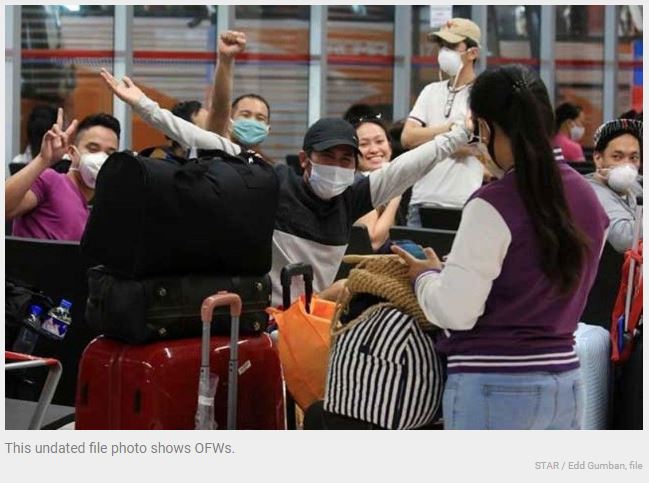Philippines: Remittances slow in July as migrants take advantage of weak peso
MANILA, Philippines — Money sent home by Filipinos overseas grew at a slower pace in July, as better exchange rates as a result of a weak peso allows expats to reduce the dollars they send to their families.
Cash remittances coursed through banks went up 2.3% year-on-year in July to $2.92 billion, the Bangko Sentral ng Pilipinas reported Thursday. This, however, was slower than the 4.4% growth recorded in June.
Year-to-date, cash remittances amounted to $18.26 billion.
Remittances are considered the lifeblood of the consumption-dependent Philippine economy. Money sent home by overseas Filipinos augment their families’ income here.
Likewise, these remittances are also crucial sources of dollars for the country. Remittances amounted to $31.42 billion last year, expanding 5.1% compared to the 2020 haul. The collections slightly missed the central bank’s forecast of 6% growth, but the BSP hopes remittances would rise this year.
With the peso plunging to record-lows after record-lows against a surging greenback due in part to the US Fed’s aggressive interest rate hikes, remittances are getting a boost. While this should be beneficial for Filipinos abroad and their families here, a strong dollar trend is only adding fuel to a painfully high inflation that’s squeezing household budgets.
Nicholas Antonio Mapa, senior economist of ING Bank in Manila, forecast remittances to keep growing at a “moderate” pace in the coming months.
“Remittances are expected to remain in expansion but will likely moderate. We had expected the dollar growth of remittances to slow due to exchange rate nuances, OFs can afford to send just a tad bit more given better exchange rates but higher cost of living will still force them to send more,” he said in a Viber message.
BSP data broken down showed 41.4% of cash remittances in the first 7 months came from the United States, while the rest came from Singapore, Saudi Arabia, Japan the United Kingdom, the United Arab Emirates, Canada, Qatar, South Korea, and Taiwan.
Remittance from land-based workers inched by 2.5% year-on-year to $2.36 billion in July. Sea-based workers sent in a total of $552 million, growing 1.3% year-on-year.
Jeremiah Opiniano, professor at the University of Santo Tomas and executive director at the Institute for Migration and Development Issues, agreed with Mapa’s assessment.
“So we have a situation that more dollars coming in but cost of goods and services is higher. That situation may just cancel things out in terms of what money remains for the migrant family at home,” he said.
Remittances proved to be a resilient source of dollars for the government for most of the pandemic lockdowns. Despite widespread layoffs globally, overseas Filipino workers who managed to keep their jobs sent in a steady stream of remittances to their families here.
That said, economists are projecting the global economy to slow down in the coming months as central banks unleashed aggressive rate hikes to temper inflation in their home countries. Mapa expects remittances will be insulated.
“Projected global recession not expected to impact remittance growth trend as the deployment of OFs resume,” he said.
Source: https://www.philstar.com/business/2022/09/15/2209870/remittances-slow-july-migrants-take-advantage-weak-peso


 Thailand
Thailand




